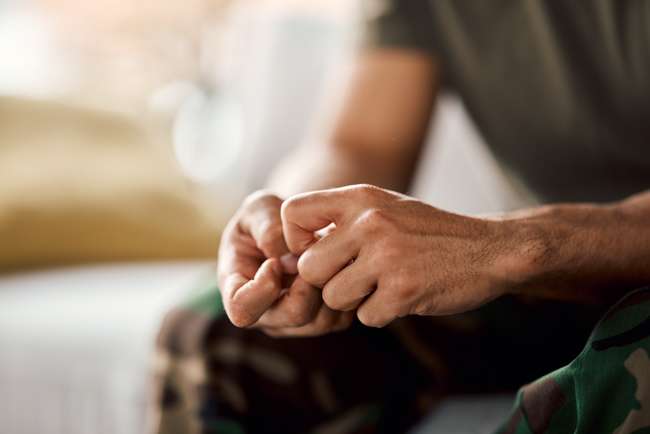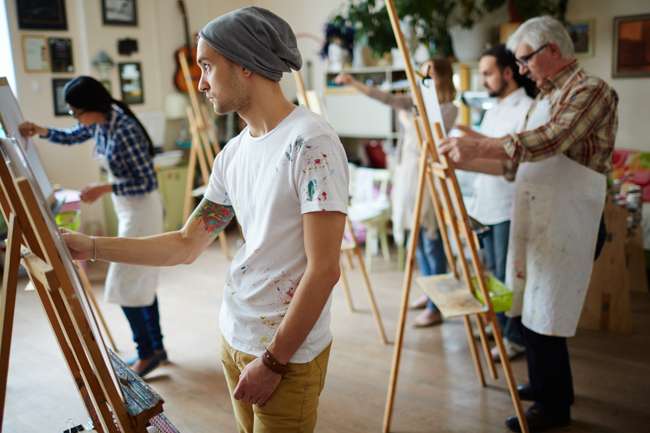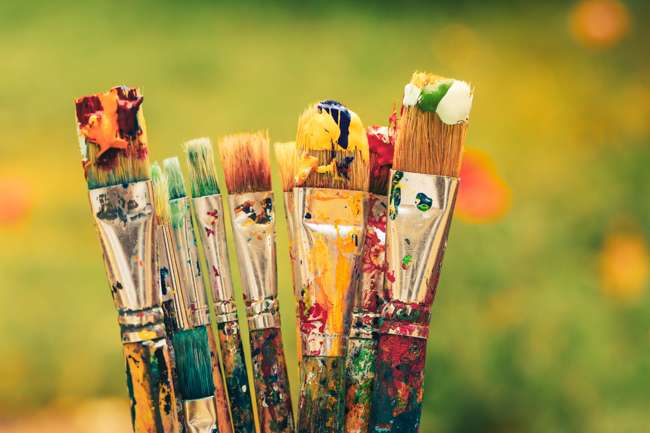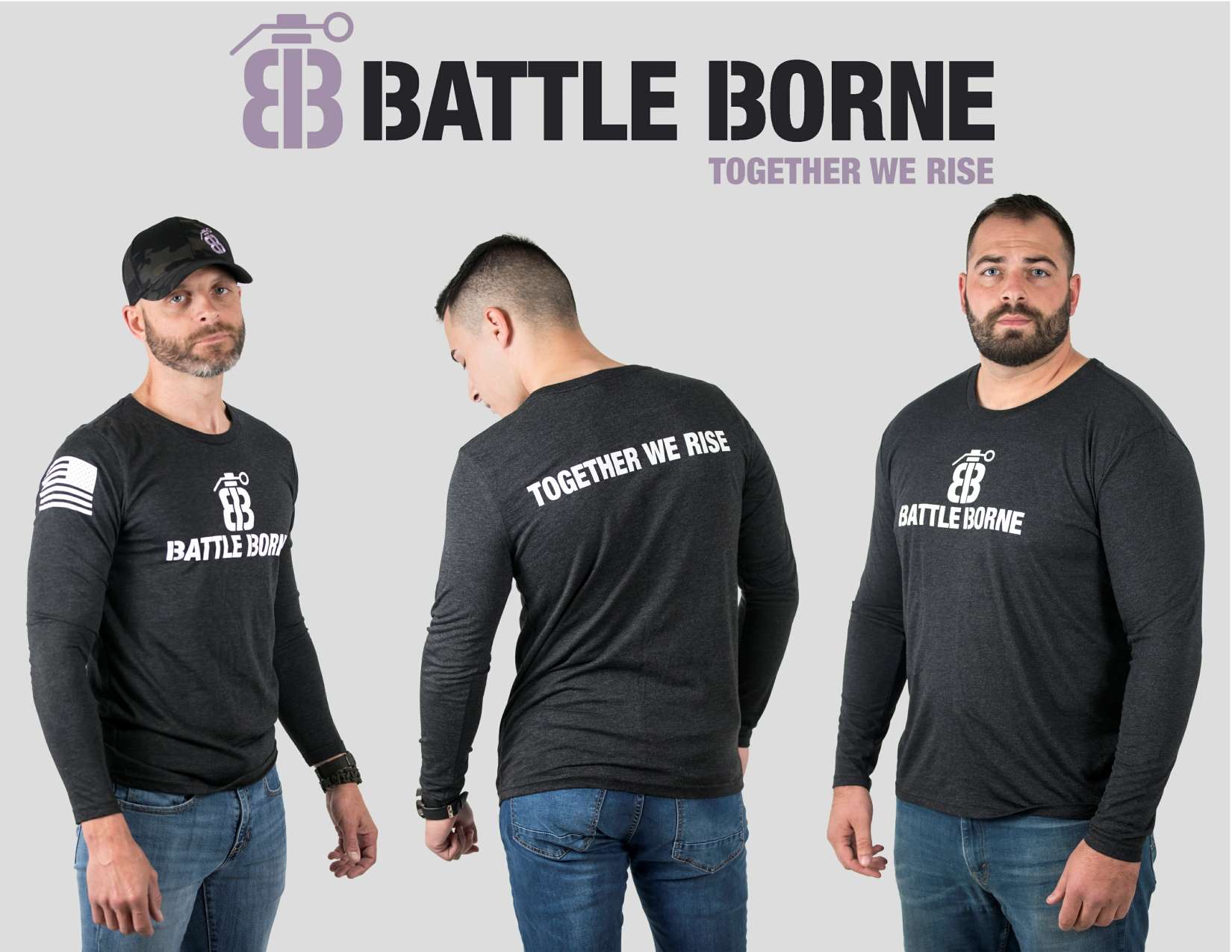Resources
The Healing Palette:
How Art Offers Solace for PTSD WarriorsBy: Eve Chiles
For those battling the invisible wounds of Post-Traumatic Stress Disorder (PTSD), words often fail. The overwhelming emotions, intrusive memories, and hypervigilance can feel trapped within, resistant to traditional verbal expression. Yet, a profound and accessible path to healing exists through the strokes of a brush, the moulding of clay, or the blending of colors: art therapy. More than just a creative hobby, engaging in art provides a vital therapeutic outlet, offering unique benefits for navigating the complex landscape of PTSD recovery.
Why Art Works When Words Stumble
PTSD fundamentally affects the brain, particularly areas involved in language and explicit memory, like Broca’s area. Trauma memories are often stored non-verbally as sensations, images, and emotions, making them incredibly difficult to articulate (Van Der Kolk, 2014). This is where art shines:
- Bypassing the Verbal Blockade:
Art provides a non-verbal channel for expression. Individuals can externalize their internal chaos – the fear, anger, numbness, or fragmented memories – onto paper, canvas, or through sculpture without needing to find the “right” words (Malchiodi, 2020). A dark, swirling painting might capture anxiety far more accurately than a sentence. - Regulating the Nervous System:
The focused, rhythmic actions involved in art-making, like drawing repetitive patterns, kneading clay, or mindful coloring, can activate the parasympathetic nervous system. This helps counteract the hyperarousal state common in PTSD, promoting relaxation and grounding in the present moment (Hass-Cohen & Findlay, 2015). - Processing Trauma Safely:
Art creates a tangible object that represents an internal state. This “objectification” provides psychological distance, allowing individuals to view and process traumatic material from a safer vantage point. It becomes something they can observe and work with, rather than being overwhelmed. (Walker et al., 2016). - Restoring Agency and Control:
Trauma often involves a devastating loss of control. In the art space, the individual regains autonomy. They choose the medium, the colours, the subject (or non-subject), and how much to reveal. Each decision becomes an act of empowerment (Collie et al., 2006). - Integrating Fragmented Experiences: Creating art can help piece together fragmented memories and sensations associated with the trauma. Visualizing elements of the experience, even abstractly, can begin the process of making sense of the incomprehensible and integrating it into one’s life narrative.


Evidence on the Canvas
Research increasingly validates art therapy’s role in PTSD treatment. Studies have shown significant reductions in PTSD symptoms like avoidance, hyperarousal, and re-experiencing among participants engaged in structured art therapy programs (Campbell et al., 2016). For example, research with military veterans found that art therapy helped reduce symptoms of depression and anxiety while improving overall quality of life and emotional regulation (Nanda et al., 2011). It’s not about creating masterpieces; it’s about the process of creation itself being the medicine.
Finding Your Palette
You don’t need to be an artist. The therapeutic power lies in the act of doing and creating:
- Drawing/Sketching: Expressing emotions or memories through lines and shapes.
- Painting: Using colour intuitively to represent feelings or internal states.
- Collage: Combining images and textures to tell a story or represent complex emotions.
- Sculpture/Clay Work: Providing a tactile, grounding experience for releasing tension or shaping difficult emotions.
- Mandala Creation: Focusing on circular, repetitive patterns for calming and centering.
A Path Toward Wholeness
For those living with PTSD, the journey to healing is deeply personal. Art therapy offers a unique, accessible, and often profoundly effective path. It provides a voice when words are insufficient, a sense of control amidst chaos, and a tangible way to process the intangible pain. By externalizing the internal world, individuals can begin to reclaim their narrative, find moments of peace, and rediscover a sense of self beyond the trauma. If talk therapy feels like a locked door, art might just be the key that fits.
References:
- Campbell, M., Decker, K. P., Kruk, K., & Deaver, S. P. (2016). Art Therapy and Cognitive Processing Therapy for Combat-Related PTSD: A Randomized Controlled Trial. Art Therapy: Journal of the American Art Therapy Association, 33(4), 169–177.
- Collie, K., Backos, A., Malchiodi, C., & Spiegel, D. (2006). Art therapy for combat-related PTSD: Recommendations for research and practice. Art Therapy: Journal of the American Art Therapy Association, 23(4), 157–164.
- Hass-Cohen, N., & Findlay, J. C. (2015). Art therapy and the neuroscience of relationships, creativity, and resiliency: Skills and practices. W.W. Norton & Company.
- Malchiodi, C. A. (2020). Trauma and Expressive Arts Therapy: Brain, Body, and Imagination in the Healing Process. Guilford Publications.
- Nanda, U., Barbato Gaydos, H. L., Hathorn, K., & Watkins, N. (2011). Art and posttraumatic stress: A review of the empirical literature on the therapeutic implications of artwork for war veterans with posttraumatic stress disorder. Environment and Behavior, 43(3), 379–402.
- Van Der Kolk, B. A. (2014). The Body Keeps the Score: Brain, Mind, and Body in the Healing of Trauma. Viking.
- Walker, M. S., Kaimal, G., Koffman, R., & DeGraba, T. J. (2016). Art therapy for PTSD and TBI: A senior active duty military service member’s therapeutic journey. The Arts in Psychotherapy, 49, 10–18.

Subscribe
Stay in touch & informed about events, programs, initiatives and more!
while we can never do enough for our defenders and their loved ones
WE CAN ALWAYS DO A LITTLE MORE
VETS HELPING VETS

PA counties include: Lehigh, Northampton, Carbon, Monroe, Berks, Schuylkill, Warren, Lackawanna, Luzerne, Wyoming, Bucks, Chester, Montgomery, Lebanon, Lancaster, Dauphin
ABOUT
Battle Borne is a collaborative effort among like-minded individuals and organizations intent on repairing and restoring people who have served our country. We do this by delivering a unique level of support and guidance to those service men and women who have emotional and psychological wounds.


